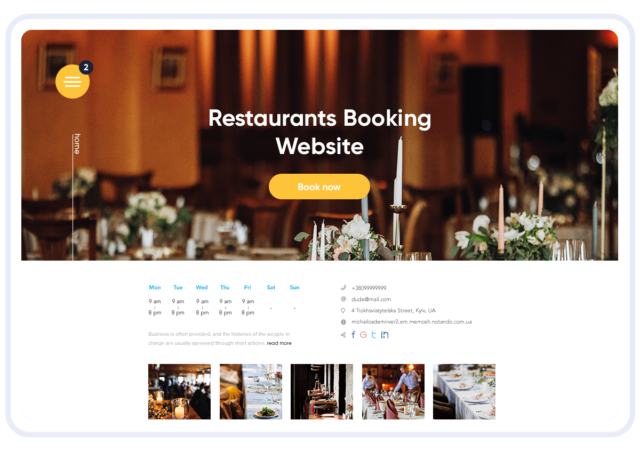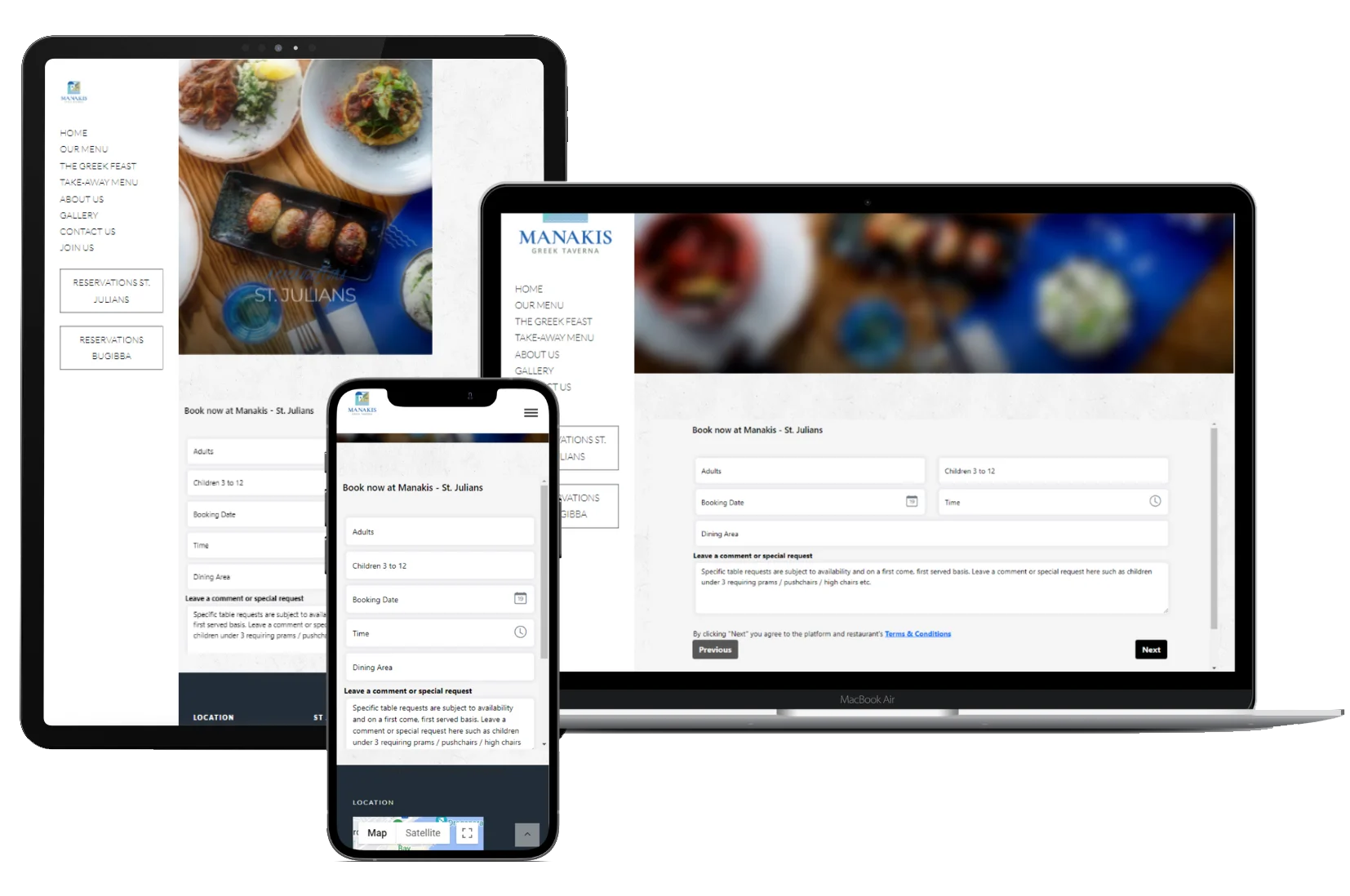In an increasingly digital world, having an online booking system for your restaurant is essential for streamlining reservations, enhancing customer experience, and maximizing your table turnover. An effective online booking system can help you manage your reservations more efficiently while providing a seamless experience for your guests. Here’s a comprehensive guide on how to set up an online booking system for your restaurant website.

Table of Contents
Toggle1. Choose the Right Online Booking System
Selecting the right booking system is the first step in the process. Consider the following factors when evaluating different options:
- Features: Look for essential features like table management, reservation reminders, integration with your POS system, and customer database management.
- User Interface: Ensure the system is user-friendly for both staff and customers. A complicated interface can deter customers from making a reservation.
- Mobile Compatibility: With many diners using smartphones to make reservations, ensure that the booking system is mobile-friendly.
- Cost: Compare pricing structures, including monthly fees, commission rates on bookings, and any additional costs for features or integrations.
Popular Online Booking Systems:
- OpenTable: Known for its extensive network and user-friendly interface.
- Resy: Offers a modern approach with great management tools.
- Bookatable: Provides comprehensive features for managing reservations and promotions.
2. Integrate the Booking System into Your Website
Once you’ve chosen a booking system, the next step is to integrate it into your restaurant website. Here are some methods to consider:
- Direct Integration: Many booking systems offer plugins or widgets that can be easily integrated into your website’s code.
- Embedded Links: If direct integration is not an option, consider adding a prominent button or link on your website that directs customers to your booking page hosted by the booking provider.
- Custom Page: Create a dedicated page on your website for reservations, clearly outlining the booking process, policies, and any relevant information.
Tips:
- Ensure that the booking button is visible and easy to find, ideally in the website header or footer.
- Use contrasting colors for the booking button to make it stand out.
3. Customize Your Booking Settings
Tailoring the booking system to your restaurant’s specific needs can enhance functionality and customer experience. Here are some customization options to consider:
- Reservation Time Slots: Set the duration of reservations based on your table turnover rate. For example, if your average dining experience lasts 1.5 hours, create time slots accordingly.
- Party Size Limits: Specify the maximum and minimum number of guests allowed per reservation to help manage table availability effectively.
- Cancellation Policy: Clearly define your cancellation policy and consider implementing a system for collecting deposits if necessary.
Tips:
- Test different settings to find what works best for your restaurant and customers.
- Regularly review and adjust settings based on customer feedback and dining trends.
4. Enhance Customer Experience
A smooth booking experience can lead to higher customer satisfaction and repeat business. Here are some strategies to enhance the customer experience:
- Confirmation Emails: Automatically send confirmation emails to customers once they make a reservation. Include details like date, time, party size, and any special requests.
- Reminders: Implement automated reminder emails or SMS messages to reduce no-shows. Send reminders a day before or a few hours before the reservation.
- Special Requests: Allow customers to indicate special requests (e.g., dietary restrictions, special occasions) during the booking process.
Tips:
- Personalize communication to make customers feel valued.
- Create a welcoming atmosphere from the moment they book until they arrive.
5. Train Your Staff
Training your staff on how to use the online booking system is crucial for its success. Ensure that they are familiar with:
- Managing Reservations: Teach them how to view, modify, or cancel reservations as needed.
- Handling Customer Inquiries: Equip staff with knowledge about the booking system so they can confidently assist customers with questions.
- Using Data: Encourage staff to utilize customer data for providing personalized service and anticipating needs.
Tips:
- Provide ongoing training sessions as updates are made to the system.
- Foster a culture of customer service excellence, emphasizing the importance of the online booking system in improving customer satisfaction.
6. Promote Your Online Booking System
Once your online booking system is set up, promote it through various channels to maximize usage:
- Website Promotion: Feature your booking system prominently on your homepage, and consider adding a banner or pop-up for first-time visitors.
- Social Media: Share links to your booking page on platforms like Facebook, Instagram, and Twitter. Engage with your audience and encourage them to make reservations online.
- Email Marketing: Include a call-to-action in your newsletters or promotional emails, directing customers to your booking page for special events or offers.
Tips:
- Consider running promotions (e.g., discounts for online reservations) to encourage customers to use the booking system.
- Highlight the convenience of online booking in your promotions to attract tech-savvy diners.
7. Analyze and Optimize
Finally, regularly review the performance of your online booking system to identify areas for improvement. Utilize analytics provided by the booking system to track:
- Reservation Trends: Monitor peak booking times, popular dates, and customer demographics.
- Customer Feedback: Gather feedback from customers regarding their booking experience and any issues encountered.
- No-Show Rates: Analyze no-show rates and consider adjusting your policies or reminder strategies accordingly.
Tips:
- Use data-driven insights to refine your booking process and enhance customer satisfaction.
- Continually seek ways to improve the booking experience based on customer preferences.
Conclusion
Setting up an online booking system for your restaurant website is a strategic move that can improve customer experience, streamline operations, and boost reservations. By choosing the right system, integrating it effectively, customizing settings, and promoting it well, you can create a seamless booking experience for your customers. Don’t forget to continuously analyze performance and optimize the system based on feedback and data. With the right approach, your online booking system can become a vital tool for the success of your restaurant!


No responses yet